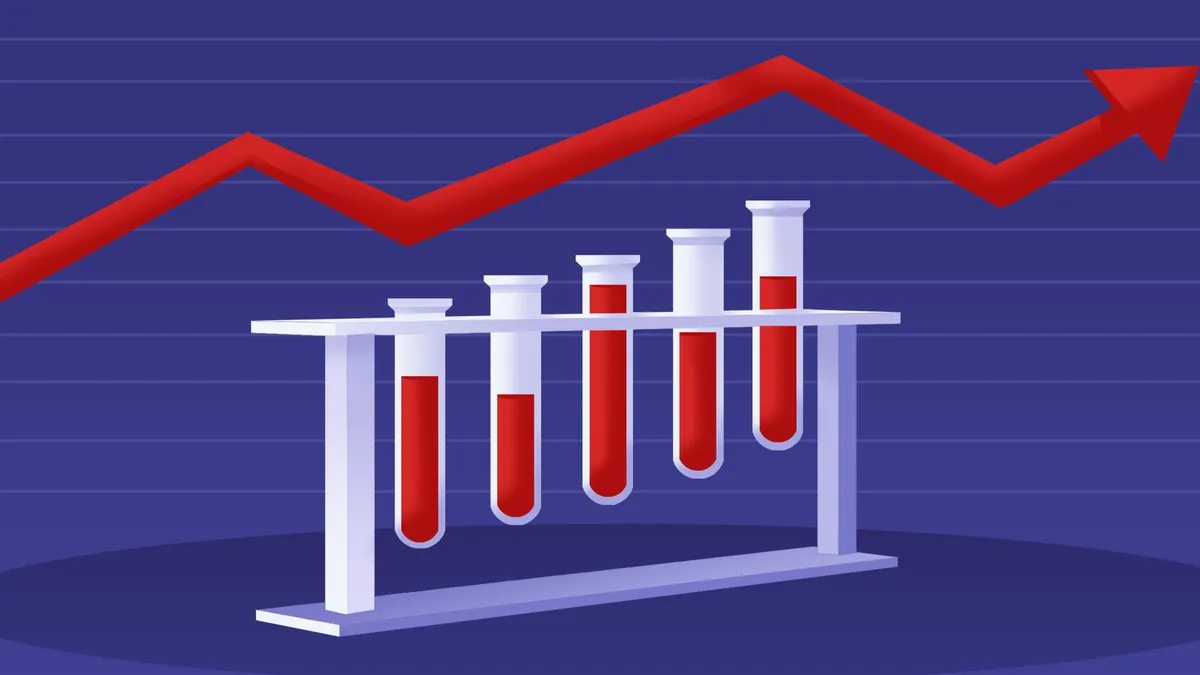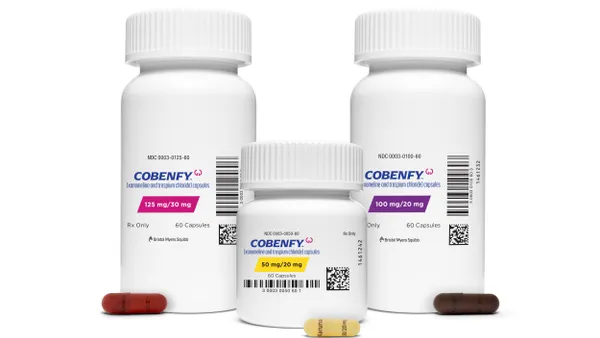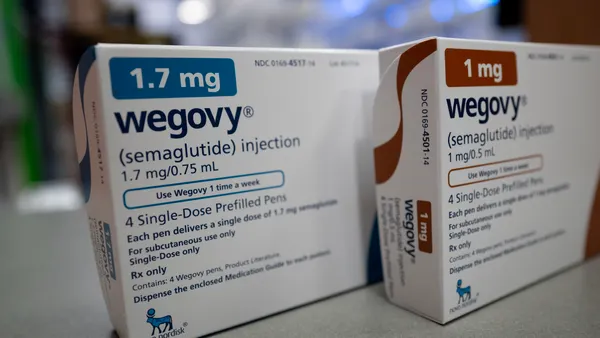Over the next five years, 88 biologics—including several blockbuster agents like Eliquis, Keytruda, Opdivo and Darzalex—are facing a loss of exclusivity, representing an estimated market of more than $100 billion. After the fierce competition between Humira (adalimumab) biosimilars, manufacturers are keeping a close eye on adoption dynamics for biosimilars of Johnson & Johnson’s autoimmune drug, Stelara (ustekinumab).
While Stelara is used in fewer indications than Humira, it commands a large market share in its therapeutic areas, most notably in plaque psoriasis, Crohn's disease and ulcerative colitis. For the past few years, Stelara has been J&J’s top seller, earning $10.4 billion in 2024.
Now that seven ustekinumab biosimilars are commercially available, manufacturers will be paying close attention to how the market responds—and how this biosimilar race differs from last year’s. What is the impact of vertical integration, the IRA and other factors on biosimilar adoption?
A dearth of differentiators
Back in 2023, several Humira biosimilars launched with a unique dual pricing strategy, featuring both high-WAC and low-WAC products. This strategy appealed to PBMs, as higher-priced biosimilars allowed them to maximize the rebates they offered clients.
For the most part, Stelara biosimilars have not followed this trend. Although Amgen launched its ustekinumab biosimilar, Wezlana, with both high- and low-WAC options, the remaining biosimilars debuted with list prices ranging from 80% to 90% below Stelara’s pricing. So how will these low-cost biosimilars distinguish themselves from one another?
In the Humira biosimilars competition, achieving FDA-approved interchangeability was a huge boon, as it meant that the biosimilar could be substituted for the originator drug at the pharmacy level, unlike its peers. This is not true for the Stelara biosimilar landscape, as only one (Accord BioPharma’s Imuldosa) lacks interchangeability status. In any case, interchangeability will likely become a non-issue for future biosimilar launches, as the FDA is currently seeking to amend the Public Health Service Act to deem all approved biosimilars interchangeable with their respective reference products.
As more ustekinumab biosimilars come to market—such as Bio-Thera Solutions and Hikma Pharmaceuticals’ Starjemza, the eighth to be approved by the FDA—it remains to be seen if any one factor will set a biosimilar apart. Right now, all the available ustekinumab biosimilars are approved for each of Stelara’s indications. And as every Stelara biosimilar thus far is available in both subcutaneous and intravenous formulations, the route of administration will not help differentiate between them. So what will?
Net cost drives formulary decisions
According to MMIT research conducted in May 2025, net cost is far and away the most important factor for payers deciding which ustekinumab biosimilars to add to formularies. Payers also value biosimilars that have a similar formulation to Stelara, as well as interchangeability status and label breadth.
In our MMIT Index report on immunology, the majority of surveyed payers and PBMs—representing 83% of commercial lives—indicated they were very or extremely likely to remove Stelara from their formularies by Q2 2026. They noted that biosimilars offer lower list prices, more favorable contracting and greater cost savings for patients.
Payers indicate they’re likely to place between one and four ustekinumab biosimilars on their preferred specialty tier. Large national payers plan to incentivize physicians to transition their patients to ustekinumab biosimilars, while PBMs are more likely to mandate switching and/or require a biosimilar step before patients can access Stelara.
Impact of vertical integration
Market penetration of adalimumab biosimilars was initially slow, due primarily to AbbVie’s masterful payer contracting strategy. J&J, on the other hand, has so far focused more on litigation than contracting. When Stelara’s patents began expiring in 2023, J&J filed preemptive lawsuits against several manufacturers before their ustekinumab biosimilars were approved, resulting in delayed market launches.
In the spring of 2024, Humira was removed from CVS Caremark’s commercial formularies in favor of the private-labeled Sandoz biosimilars produced by CVS Health’s brand-new subsidiary, Cordavis. This move opened the floodgates for other distribution partnerships and Humira began losing significant market share. While adalimumab biosimilars have captured approximately one-third of the market today, experts predict they will reach 60% by the end of 2027.
Now that all three major PBMs have their own private-label subsidiaries for biosimilar distribution—along with Cordavis, there’s Cigna Group/Express Scripts’ Quallent Pharmaceuticals and UnitedHealth Group/Optum Rx’s Nuvaila—they appear to be following the same playbook for Stelara biosimilars that was first used with Humira biosimilars.
Amgen has partnered with Nuvaila to exclusively private-label Wezlana, which is featured at both list prices on Optum Rx’s formularies, along with Stelara. Express Scripts is also featuring a lower-cost, private-label ustekinumab biosimilar from Quallent on its formulary, but the exact pricing seems to be higher than branded biosimilars and is perhaps offset by Quallent rebates. Meanwhile, Cordavis is commercializing a private-label version of Samsung Bioepis’s Pyzchiva.
Complicating factors
Manufacturers of biologics and biosimilars alike will be paying close attention to which Stelara biosimilars are able to capture the largest segment of the market—and how they do so. Clearly, pharma companies will need to leverage considerable contracting power to win a position on payers’ formularies.
Unlike AbbeVie, J&J will also be leveraging two additional strategies to retain market share in these indications. The company recently launched an unbranded biologic, ustekinumab, which is simply Stelara without the name. J&J followed a similar playbook in 2021, when it introduced a low-cost, unbranded infliximab after its biologic, Remicade, faced biosimilar competition.
In addition to promoting its unbranded ustekinumab, J&J will likely work to convince payers of the benefits of its biologic Tremfya (quselkumb), a competitor of Stelara’s in the psoriasis, psoriatic arthritis and IBD spaces. The two drugs have a similar mechanism of action, as they both target IL-23, a protein responsible for inflammation in autoimmune diseases.
If payers evaluate ustekinumab biosimilars primarily on cost, it will be interesting to track what happens early next year, when a new maximum fair price is slated to take effect for Stelara. As Stelara was one of the first ten products selected for negotiation under the IRA’s Medicare Drug Price Negotiation Program, it will be discounted 66% from its 2023 list price, beginning January 1, 2026.
However, there is some uncertainty about whether or not this new fair price will actually take effect, as market competition will have already accomplished the goals of the negotiation program. If Stelara biosimilars are debuting at 85% less than Stelara, but Stelara itself now costs 66% less than it once did, is it still worth transitioning patients to a biosimilar? If cost savings are negligible, what will payers prioritize instead? Only time will tell which questions will prove applicable to the next biosimilar rollout.
For actionable insights from unblinded field research with payers and providers, learn more about the MMIT Biologics & Injectables Index.










